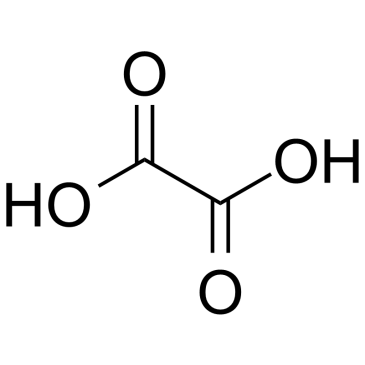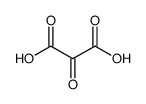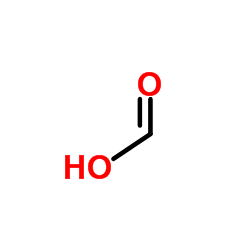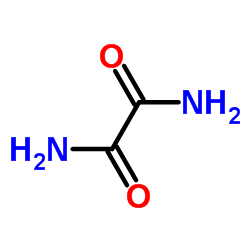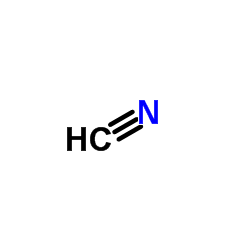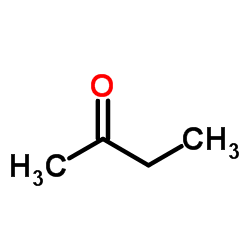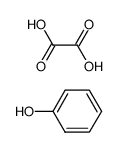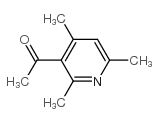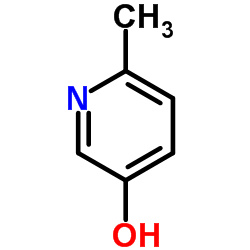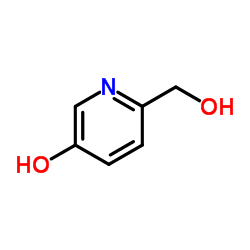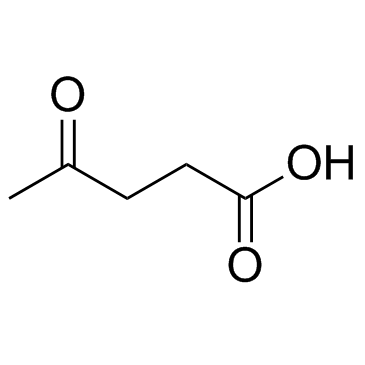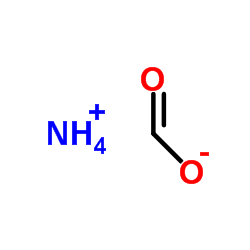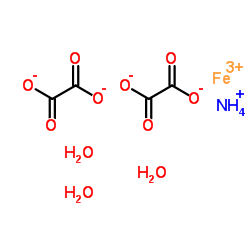1113-38-8
| 中文名 | 草酸铵 |
|---|---|
| 英文名 | Ethanedioic Acid Diammonium Salt |
| 英文别名 |
MFCD00013308
EINECS 214-202-3 Ammonium oxalate diazanium,oxalate |
| 沸点 | 365.1ºC at 760 mmHg |
|---|---|
| 熔点 | 131-135°C |
| 分子式 | C2H8N2O4 |
| 分子量 | 124.096 |
| 闪点 | 188.8ºC |
| 精确质量 | 124.048409 |
| PSA | 81.08000 |
| 外观性状 | 无色晶体或颗粒 |
| 蒸汽压 | 2.51E-06mmHg at 25°C |
| 储存条件 | 存于密闭容器中,置于凉爽、通风处,远离食品。 |
| 稳定性 | 有毒! 可溶于水,难溶于乙醇。 |
| 水溶解性 | Soluble |
| 分子结构 | 1、摩尔折射率:无可用的 2、摩尔体积(cm3/mol):无可用的 3、等张比容(90.2K):无可用的 4、表面张力(dyne/cm):无可用的 5、介电常数:无可用的 6、极化率(10-24cm3):无可用的 7、单一同位素质量:124.048407 Da 8、标称质量:124 Da 9、平均质量:124.0959 Da |
| 计算化学 | 1.疏水参数计算参考值(XlogP):无 2.氢键供体数量:2 3.氢键受体数量:4 4.可旋转化学键数量:0 5.互变异构体数量:无 6.拓扑分子极性表面积82.3 7.重原子数量:8 8.表面电荷:0 9.复杂度:60.5 10.同位素原子数量:0 11.确定原子立构中心数量:0 12.不确定原子立构中心数量:0 13.确定化学键立构中心数量:0 14.不确定化学键立构中心数量:0 15.共价键单元数量:3 |
| 更多 | 1. 性状:无色粉末。无气味。 2. 密度(g/mL,25/4℃):1.5885 3. 相对蒸汽密度(g/mL,空气=1):未确定 4. 熔点(ºC):未确定 5. 沸点(ºC,常压):未确定 6. 沸点(ºC,5.2kPa):未确定 7. 折射率:1.439 8. 闪点(ºC):未确定 9. 比旋光度(º):未确定 10. 自燃点或引燃温度(ºC):未确定 11. 蒸气压(kPa,25ºC):未确定 12. 饱和蒸气压(kPa,60ºC):未确定 13. 燃烧热(KJ/mol):未确定 14. 临界温度(ºC):未确定 15. 临界压力(KPa):未确定 16. 油水(辛醇/水)分配系数的对数值:未确定 17. 爆炸上限(%,V/V):未确定 18. 爆炸下限(%,V/V):未确定 19. 溶解性:对湿敏感。1g产品溶于2.6ml沸水、20ml冷水。微溶于乙醇,不溶于氨水。 |
Synonym:Diammonium oxalate, monohydrate; Ethanedioic acid, diammonium salt monohydrate; Oxalic acid, diammonium salt monohydrate Section 2 - COMPOSITION, INFORMATION ON INGREDIENTS
Risk Phrases: 21/22 Section 3 - HAZARDS IDENTIFICATION EMERGENCY OVERVIEW
Harmful in contact with skin and if swallowed. Potential Health Effects Eye: May cause eye irritation. May result in corneal injury. Skin: Harmful if absorbed through the skin. Oxalate is an irritant and may cause dermatitis. Skin lesions begin with epithelial cracking and the formation of slow-healing ulcers. The fingers may appear cyanotic. Ingestion: Ulcerations of the mouth, vomiting of blood, and rapid appearance of shock, convulsions, twitching, tetany, and cardiovascular collapse may occur following ingestion of oxalic acid or its soluble salts. Systemic effects may be due to formation of calcium oxalate which is insoluble at physiological pH and can be deposited in the brain and kidney tubules. Resultant hypocalcemia might disturb the function of the heart and nerves. Mean lethal dose for oxalates in adults is estimated at 10 - 30 grams (143 - 428 mg/kg). Inhalation: Inhalation of oxalic acid produces irritation of the respiratory tract, ulceration of the mucous membranes, headaches, nervousness, cough, vomiting, emaciation, back pain (due to kidney injury), and weakness. Chronic: Inhalation of oxalic acid dust or mist over a long period of time might result in weight loss and respiratory tract inflammation. Rats administered oxalic acid at 2.5 and 5% in the diet for 70 days developed depressed thyroid function and weight loss. A study of railroad car cleaners in Norway who were heavily exposed to oxalic acid solutions and vapors revealed a 53% prevalence of urolithiasis (the formation of urinary stones), compared to a rate of 12% among unexposed workers from the same company. Section 4 - FIRST AID MEASURES Eyes: In case of contact, immediately flush eyes with plenty of water for at least 15 minutes. Get medical aid immediately. Skin: In case of contact, immediately flush skin with plenty of water for at least 15 minutes while removing contaminated clothing and shoes. Get medical aid immediately. Wash clothing before reuse. Ingestion: If swallowed, do NOT induce vomiting. Get medical aid immediately. If victim is fully conscious, give a cupful of water. Never give anything by mouth to an unconscious person. Inhalation: If inhaled, remove to fresh air. If not breathing, give artificial respiration. If breathing is difficult, give oxygen. Get medical aid. Notes to Physician: Treat symptomatically and supportively. Antidote: Intravenous administration of calcium gluconate or calcium chloride may be required if hypocalcemia or hypocalcemic tetany occur. Section 5 - FIRE FIGHTING MEASURES General Information: As in any fire, wear a self-contained breathing apparatus in pressure-demand, MSHA/NIOSH (approved or equivalent), and full protective gear. During a fire, irritating and highly toxic gases may be generated by thermal decomposition or combustion. Use water spray to keep fire-exposed containers cool. Extinguishing Media: Use water spray, dry chemical, carbon dioxide, or appropriate foam. Section 6 - ACCIDENTAL RELEASE MEASURES General Information: Use proper personal protective equipment as indicated in Section 8. Spills/Leaks: Vacuum or sweep up material and place into a suitable disposal container. Clean up spills immediately, observing precautions in the Protective Equipment section. Avoid generating dusty conditions. Provide ventilation. Section 7 - HANDLING and STORAGE Handling: Wash thoroughly after handling. Remove contaminated clothing and wash before reuse. Minimize dust generation and accumulation. Do not get in eyes, on skin, or on clothing. Keep container tightly closed. Do not ingest or inhale. Discard contaminated shoes. Use only with adequate ventilation. Storage: Store in a tightly closed container. Store in a cool, dry, well-ventilated area away from incompatible substances. Oxalates slowly corrode steel. Section 8 - EXPOSURE CONTROLS, PERSONAL PROTECTION Engineering Controls: Facilities storing or utilizing this material should be equipped with an eyewash facility and a safety shower. Use adequate ventilation to keep airborne concentrations low. Personal Protective Equipment Eyes: Wear appropriate protective eyeglasses or chemical safety goggles as described by OSHA's eye and face protection regulations in 29 CFR 1910.133 or European Standard EN166. Skin: Wear appropriate protective gloves to prevent skin exposure. Clothing: Wear appropriate protective clothing to prevent skin exposure. Respirators: Follow the OSHA respirator regulations found in 29CFR 1910.134 or European Standard EN 149. Always use a NIOSH or European Standard EN 149 approved respirator when necessary. Section 9 - PHYSICAL AND CHEMICAL PROPERTIES Physical State: Solid Appearance: white Odor: odorless pH: 6.4 @ 0.1M Vapor Pressure: Not applicable. Viscosity: Not available. Boiling Point: Decomposes. Freezing/Melting Point: 70 deg C (dec) Autoignition Temperature: Not applicable. Flash Point: Not applicable. Explosion Limits, lower: Not available. Explosion Limits, upper: Not available. Decomposition Temperature: 70 deg C Solubility in water: Soluble. Specific Gravity/Density: 1.5 Molecular Formula: C2H8N2O4.H2O Molecular Weight: 142.11 Section 10 - STABILITY AND REACTIVITY Chemical Stability: Stable under normal temperatures and pressures. Conditions to Avoid: Dust generation, excess heat, Oxalates slowly corrode steel.. Incompatibilities with Other Materials: Strong oxidizing agents. Hazardous Decomposition Products: Nitrogen oxides, carbon monoxide, irritating and toxic fumes and gases, carbon dioxide, formic acid, ammonia. Hazardous Polymerization: Has not been reported. Section 11 - TOXICOLOGICAL INFORMATION RTECS#: CAS# 1113-38-8: RO2750000 CAS# 6009-70-7 unlisted. LD50/LC50: Not available. Not available. Carcinogenicity: Ammonium oxalate anhydrous - Not listed by ACGIH, IARC, NIOSH, NTP, or OSHA. Ammonium oxalate, monohydrate - Not listed by ACGIH, IARC, NIOSH, NTP, or OSHA. Other: See actual entry in RTECS for complete information. Section 12 - ECOLOGICAL INFORMATION Section 13 - DISPOSAL CONSIDERATIONS Dispose of in a manner consistent with federal, state, and local regulations. Section 14 - TRANSPORT INFORMATION IATA Shipping Name: TOXIC SOLID, ORGANIC, N.O.S.* Hazard Class: 6.1 UN Number: 2811 Packing Group: III IMO Shipping Name: TOXIC SOLID, ORGANIC, N.O.S. Hazard Class: 6.1 UN Number: 2811 Packing Group: III RID/ADR Shipping Name: TOXIC SOLID, ORGANIC, N.O.S. Dangerous Goods Code: 6.1(25C) UN Number: 2811 Section 15 - REGULATORY INFORMATION European/International Regulations European Labeling in Accordance with EC Directives Hazard Symbols: XN Risk Phrases: R 21/22 Harmful in contact with skin and if swallowed. Safety Phrases: S 24/25 Avoid contact with skin and eyes. WGK (Water Danger/Protection) CAS# 1113-38-8: No information available. CAS# 6009-70-7: 1 United Kingdom Occupational Exposure Limits Canada CAS# 1113-38-8 is listed on Canada's DSL List. CAS# 1113-38-8 is not listed on Canada's Ingredient Disclosure List. CAS# 6009-70-7 is not listed on Canada's Ingredient Disclosure List. Exposure Limits US FEDERAL TSCA CAS# 1113-38-8 is listed on the TSCA inventory. CAS# 6009-70-7 is not on the TSCA Inventory. It is a hydrate and exempt from TSCA Inventory requirements (40CFR720.3(u)(2)). SECTION 16 - ADDITIONAL INFORMATION N/A |
|
毒理学数据: 吸入可刺激鼻、咽喉、肺;接触刺激皮肤,反复接触可导致皮肤破裂,并减缓破裂愈合;过度暴露可导致肾结石和肾损伤。 CHEMICAL IDENTIFICATION
|
| 危害码 (欧洲) | Xn:Harmful; |
|---|---|
| 风险声明 (欧洲) | R21/22 |
| 安全声明 (欧洲) | S24/25 |
| 危险品运输编码 | UN 1759 8/PG 3 |
| WGK德国 | 1 |
| RTECS号 | RO2750000 |
| 海关编码 | 2917119000 |
|
~% 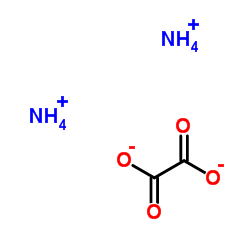
1113-38-8 |
| 文献:Russian Journal of Applied Chemistry, , vol. 81, # 9 p. 1483 - 1486 |
|
~% 
1113-38-8 |
| 文献:Journal fuer Praktische Chemie (Leipzig), , vol. <2>113, p. 92 American Chemical Journal, , vol. 5, p. 198 |
|
~% 
1113-38-8 |
| 文献:Zeitschrift fuer Chemie, , p. 302 |
|
~% 
1113-38-8 |
| 文献:Journal fuer Praktische Chemie (Leipzig), , vol. <2>113, p. 92 |
|
~% 
1113-38-8 |
| 文献:Journal fuer Praktische Chemie (Leipzig), , vol. <2>106, p. 115,136 |
|
~% 
1113-38-8 |
| 文献:Chemische Berichte, , vol. 47, p. 1810 Atti della Accademia Nazionale dei Lincei, Classe di Scienze Fisiche, Matematiche e Naturali, Rendiconti, , vol. <5> 23 I, p. 862 |
|
~% 
1113-38-8 |
| 文献:Anales de la Real Sociedad Espanola de Fisica y Quimica, , vol. 14, p. 303 |
|
~%
详细
|
| 文献:Chemische Berichte, , vol. 21, p. 3003 |
|
~%
详细
|
| 文献:Chemische Berichte, , vol. 47, p. 1810 Atti della Accademia Nazionale dei Lincei, Classe di Scienze Fisiche, Matematiche e Naturali, Rendiconti, , vol. <5> 23 I, p. 862 Atti della Accademia Nazionale dei Lincei, Classe di Scienze Fisiche, Matematiche e Naturali, Rendiconti, , vol. <5> 23 I, p. 860 |
| 上游产品 10 | |
|---|---|
| 下游产品 9 | |
| 海关编码 | 2923900090 |
|---|---|
| 中文概述 | 2923900090 其他季铵盐及季铵碱。监管条件:无。增值税率:17.0%。退税率:9.0%。最惠国关税:6.5%。普通关税:30.0% |
| 申报要素 | 品名, 成分含量, 用途 |
| Summary | 2923900090 other quaternary ammonium salts and hydroxides。Supervision conditions:None。VAT:17.0%。Tax rebate rate:9.0%。MFN tariff:6.5%。General tariff:30.0% |


